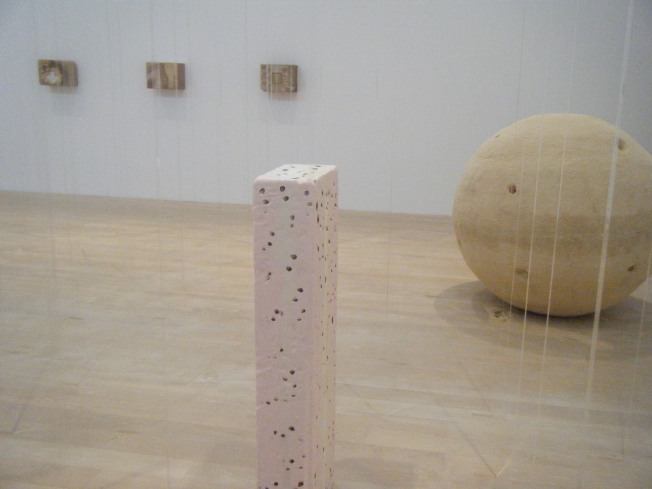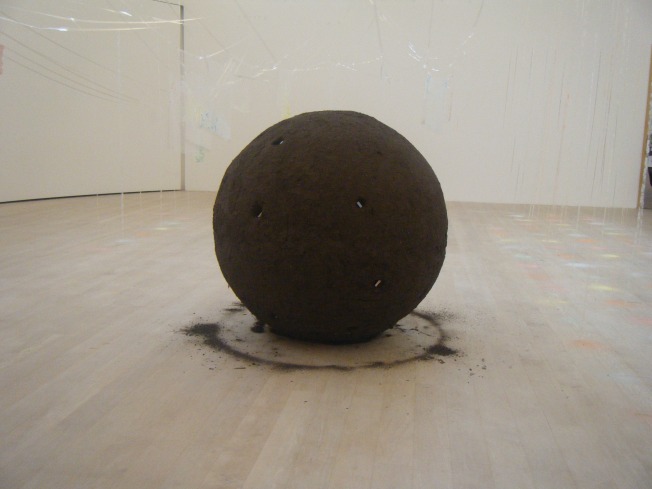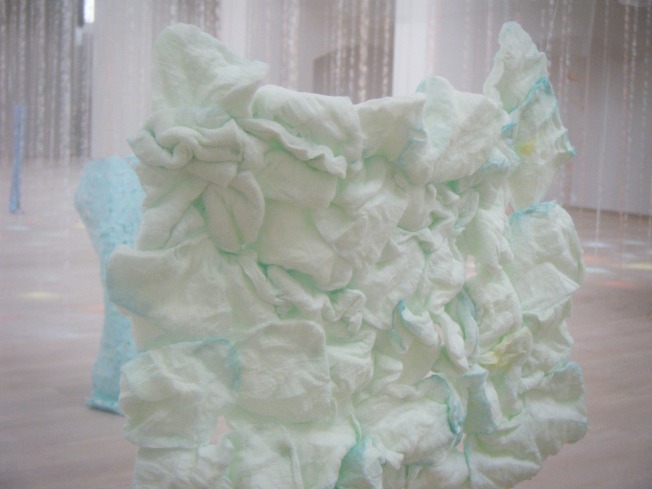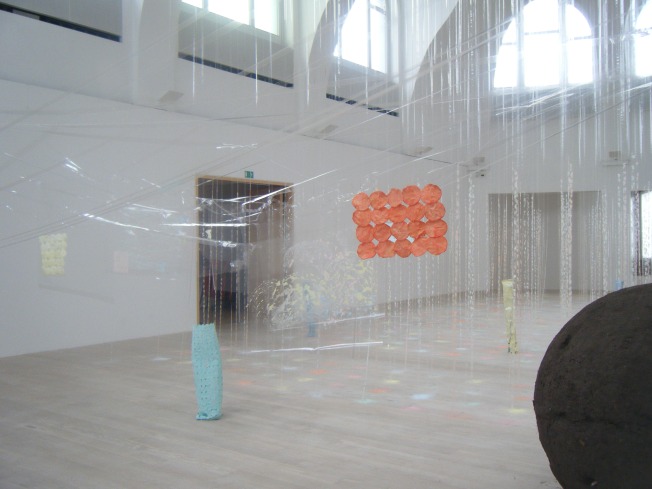

 draped, embedded, wiped, touched/pressed into, folded, crumpled, powdered, sprinkled, taped, tied, tangled, interwoven, suspended, balanced, stacked, aligned, soaked/saturated, puffed, stained…
draped, embedded, wiped, touched/pressed into, folded, crumpled, powdered, sprinkled, taped, tied, tangled, interwoven, suspended, balanced, stacked, aligned, soaked/saturated, puffed, stained…
Tag Archives: Exhibition
Callum Innes’ Cento Series: A Phenomenological Approach
Callum Innes’ Cento Series: A Phenomenological Approach
The Water of Leith runs through Edinburgh and the flow changes to different levels at a number of points along its route. It cascades off ledges in small waterfalls to the next level and the next. Sometimes there are islands of twigs and branches caught along the edge. The water gushes in a fast flow, then reaches a point where it is calm. Each part is one section of a continuum that takes it to the sea several miles away at Leith. Changing levels and flow come to mind when looking at a series of paintings in Callum Innes’ exhibition of works on paper at the Ingleby Gallery in Edinburgh. On the upper floor of the light and spacious gallery are six large vertical paintings in an even row. It is impossible to look at one without being aware of that painting’s relationship with the others. These works are from the Cento series and were painted in oil during 2011 and 2012 with modulation of transparency and colour.
The scale of the works is imposing (each painting is just over two metres in height); you look up high to the upper part of each painting and then your eye travels to somewhere just above or below the mid point, where the colour changes to another colour or between transparency and opacity for the lower section. Dissolved red to solid red; dissolved black to a solid pitch black; solid red to solid black; white to thin black; solid black to thin black; dissolved black to solid black. They are all different, but related in one dialogue that gives the series unification. The eye travels between smoothly brushed paint and thinned paint with blotches and runs made as it was dissolved by turpentine.
These paintings demand attention as you move between them, looking closely at the dividing edge within each painting and at the surface of the paintings. From fluidity to calm, smooth areas. Each long rectangle is painted on brown paper that seems almost waxy. An edge of brown paper extends beyond each painted rectangle, framing and containing it. The bare surface of the brown paper contrasts with the painted section. The mottled density of this paper is not thick and yet not transparent. I wonder about the paper – what is it? It looks like waxed paper.
And then, walking from one painting to the next, come the changing levels of the dividing lines. The division between the upper part and the lower part never seems to divide the painting evenly. It ranges from being above or below the mid point, seemingly at different heights. I try to gauge from my viewing position whether any two have the dividing line at the same height, like trying to match pairs. I am not sure. The levels do not drop in a consistent way; down, up, down, up, down two thirds, back to near the middle, all different? The divisions are mostly clean-edged except for one painting where a few runs of red drip down into the black and one with solid black brushed down slightly onto thinner black paint. They do not have the bleeding dissolved edges of Callum Innes’ Exposed Series.
Fluidity of dissolved paint is still a part of the making process in this series. Half of the six paintings exhibited have a dissolved area of paint. There are flecks and runs from the paint’s contact with turpentine. One work has waves of thin washy black paint flowing down towards a cleanly demarcated area of solid black. How did Innes preserve the neat opacity of solid black from this cascade of dissolution? Innes has, in the past, described his working process to the extent that he gives a basic understanding of the methods he employs. He does not go into greater detail, lest the magic is spoiled for the viewer. Fragility, alchemy, transformation. Isn’t part of the enjoyment the close looking – and wondering how did that happen?
Images and information about this artist and his paintings are on –


